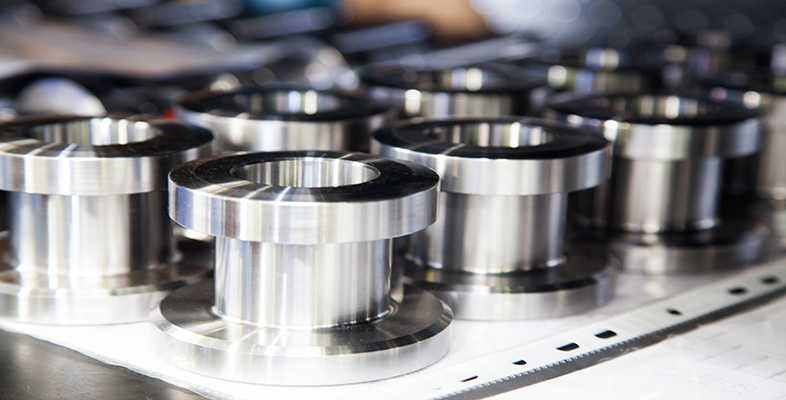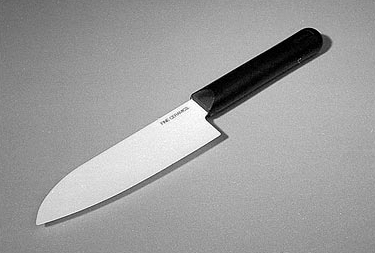7.2.2 Make the knife out of a harder material
If we want to use a harder material, the obvious first step is to look at ceramics, which are much harder than steel (see the table of hardness values in Appendix 1). The hardness of alumina (a typical engineering ceramic) is approximately 2500 HV compared to a hardened steel 600 HV; but can ceramics be used to make a kitchen knife?
The major drawback to this is that most ceramics are too brittle for kitchen applications: drop one on a tiled floor and you have the same result as dropping the best china (also a ceramic).
Nonetheless, by careful manufacture it is possible to make knives from some ceramic materials. Ceramic sushi knives are now available (Figure 54) which are made from a material based on zirconia, which has a hardness of ~1300 HV, and can be engineered to have toughness high enough to withstand the impact loading imposed by dropping. The combination of high hardness and improved toughness leads to a knife which has superior sharpness and longevity. However, for the mass market, this knife has the drawback that it has to be carefully treated and it is not suitable for cutting all types of food, such as meat, which is tougher than fish. Not a great attribute for a kitchen knife; novelty value maybe – at a cost.

